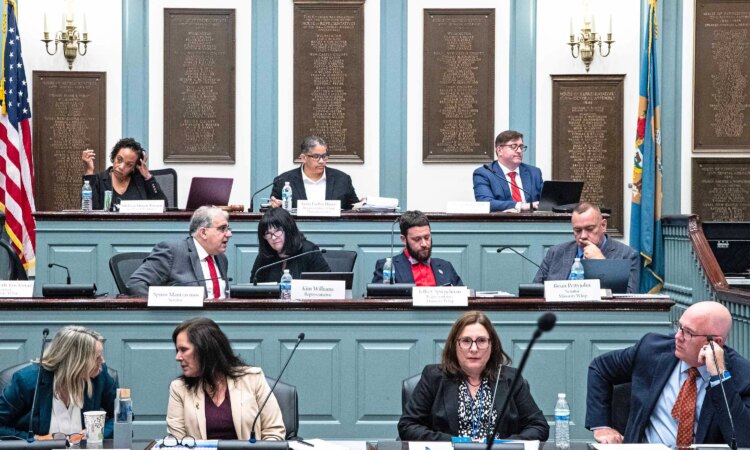
After delaying for four decades or more the property-tax reassessments that many other jurisdictions handle more routinely to maintain uniformity and fairness in property taxation, Delaware’s counties have completed mass reassessments. Complaints have followed, leading to a recent special legislative session and the enactment of several laws in response.
None of the recently enacted laws addresses the fundamental reasons why this process has been so messy, or the reasons why the Council on State Taxation and International Property Tax Institute gave Delaware’s property tax system a D in their 2019 study, down from our D+ score in 2014. Before the political urgency of fixing problems with our property tax assessments passes, I have three suggestions for action to prevent recurrence of the problems.

What complaints and concerns have stood out?
Among the many complaints and concerns expressed in the special session and other venues, three things stood out:
- There were a few glaring errors, and many appeals of actual or perceived overassessments are backlogged. Conspicuous errors in a few cases can distract us from the bigger picture. Errors are inevitable when we wait four decades to update values and then have to reappraise all of each county’s parcels at once. The scope of the task, and its extreme infrequency, required counties to delegate it to an out-of-state vendor with limited local knowledge. Additionally, inaccurate reporting of many transaction values, permitted by legal loopholes distinctive to Delaware, undermines the comparable-sales method used to estimate market values for residential properties.
- Some property owners experienced “sticker shock” when four decades of accumulated disparities were adjusted all at once. This is not because reassessment in and of itself increases tax revenues. Over four decades, some properties and neighborhoods, including mine and my neighbors’, gained more value than others. But our assessed values did not change to keep pace. We got used to paying less than our fair share of school, county, and municipal taxes. The owners of less rapidly appreciating properties subsidized us by paying more than their fair share. Presented with four decades of corrections virtually overnight, some have been vocally unhappy. I’m not thrilled by the 61% increase in my own school tax bill, but it simply means I’m now paying a fairer share, not that I’m a victim of malice or incompetence.
- Some residents and legislators expressed concern that the sudden end of that longstanding disparity could be a hardship for income-constrained owners of previously underassessed homes. This is less likely to drive people from their homes in Delaware than it might be in nearby states where effective tax rates are often two or three times as great as ours, but it might create challenges for Delawareans whose property values have grown much more than their incomes since the 1980s.
What can the Delaware General Assembly do?
There are three things the Delaware General Assembly could do right now, while we are all alert to the concerns and there is some political momentum, to address the current complaints, prevent recurrent political panics in the future, and move us off the list of the world’s worst places for property tax administration:
- Mandate a three-year rolling reassessment cycle, as Maryland does. By requiring the counties (or the state, for that matter) to reassess a third of parcels every year, we can make the process less error prone, less disruptive, and more equitable. This would also even out the workload of managing the process so that the state, the counties, or even an interlocal compact among the counties could do rather than contracting with outside firms. This could reduce error rates through local knowledge and a more orderly workflow and prevent the shock of having decades’ worth of adjustments happen overnight. Previous General Assemblies paid for expert reports from which mapped out precisely such an approach and were endorsed by the League of Women Voters of Delaware in 2010 although their recommendations were ignored.
- Adopt a means-tested “circuit breaker” provision to replace the state’s current status-tested property tax subsidies. Rather than continuing to give generous subsidies to all 65+ homeowners regardless of need, we can target tax relief to those who really need it. The Lincoln Institute of Land Policy report Property tax circuit breakers: Fair and cost-effective relief for taxpayers is a good resource for learning more.
- Promote better, more transparent reporting of actual fair market values by eliminating some of all of the current loopholes that allow buyers and sellers to conceal the actual prices paid in real property transactions. Inaccurate reporting prevents assessors from accessing enough valid market pricing information to establish accurate values using the comparable-sales method.
In this past summer’s special session, our state government adopted several well-intended short-term fixes. They have an opportunity during the upcoming regular session to adopt long-term solutions for a fair and efficient property tax system for generations to come. I hope they will do so while we have enough political energy and attention on the problem to support real change.
Jonathan Justice is a professor of public policy and administration. His Delaware home’s new tax assessment will require him to pay about his fair share of taxes levied by his local school district, county, and municipal governments for the first time since he moved to Delaware. The views expressed in this essay are his own and do not necessarily reflect to views of his employer.




